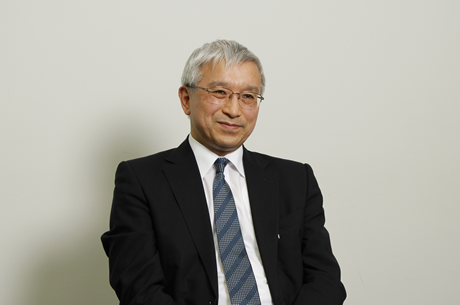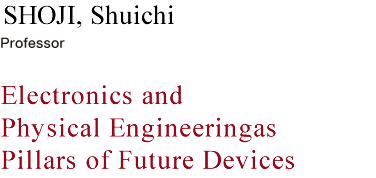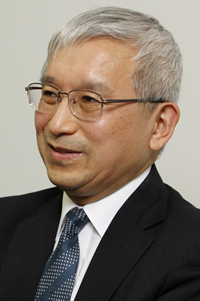- Outline
Technology that employs and controls electrons and photons supports the foundations of our modern information society. The Department of Electronic and Physical Systems / Electronic and Physical Systems Department conducts research in electronics and photo-electronics from the nano to the macro level, with a focus on materials science. This research leads directly to the development of materials and devices with new functions. We also try to combine devices with various new functions into systems. Without drawing lines between the fields of electronics, electricity, circuits, IT, communications, materials, physics, chemistry, and biology, we aim to create a new, integrated, nanotechnology-based academic field that meets the needs of the new century.


Q I understand that the department name will be changed to the “Department of Electronics and Physical Systems” from 2015. What is the reason for that? (Current name: Department of Electronic and Photonic Systems)
The mission of the department is to foster the growth of top-level resources for Japan’s key electronic industries. Although the term “photoelectronics” was appropriate while electronic engineering and optics/photonics filled key roles in these industries, recently there is demand for development of devices employing functional systems based on physics that do not fit into the category of electronic engineering. In consequence, much greater emphasis is being placed on education in physics, and the intent of the name change is to express that change in focus in a more direct manner. Although the importance of optics and photonics remains unchanged, it was decided that a name emphasizing that the curriculum is based on physics would give candidates a better overall idea of the department.
Shrinking chemical and biological laboratories with MEMS technology
Q Professor Shoji, please tell me about your field of specialization.
The mechanical components I’m referring to are pumps and valves, devices which make it possible to shrink entire laboratory systems in the fields of biology and chemistry to the point where they will fit on the palm of your hand. More specifically, we’ve succeeded in developing devices that handle complex chemical reactions, making it possible to manipulate DNA, proteins and cells in microchannels with a high degree of precision. With reduced size comes faster experiments, since the smaller quantities of reagents required reduces reaction times, as well as the cost of expensive reagents such as enzymes. Further, the ability to integrate many flow channels of the same form onto one package increases efficiency by allowing a variety of experiments to be done all at once under a variety of conditions. Also, experiments involving chemicals that produce large amounts of heat can be conducted in relative safety, so even experiments involving explosives are possible.
Q What is the role of physics in such devices?
The department provides expanding opportunities to use structures such as nanotubes in devices. This requires not only an understanding of their structure, but also the ability to take account of the characteristics of the material. Further, the development of devices that employ organic materials is a field in which Japan can demonstrate its innovativeness; this requires extensive knowledge of physics.
Q What added value do organic materials bring into the picture?
Keeping a broad view
Q Please give us a message for candidates and high school students
It’s often said that Japan is a closed and stagnant society. Many people are pessimistic about the country’s future prospects, thinking it has reached its limits and will now go into decline. However, producing devices is our livelihood, and as the materials with which they are used change, there will be a need for new devices that we cannot currently imagine. Mathematics and physics are the foundations on which such wondrous devices and systems will be developed. Adding to that, Waseda has some of the best research facilities in Japan, including its Nanotechnology Research Center. Taking full advantage of these resources, study hard and break out of your own isolation with the ambition to change the world.

